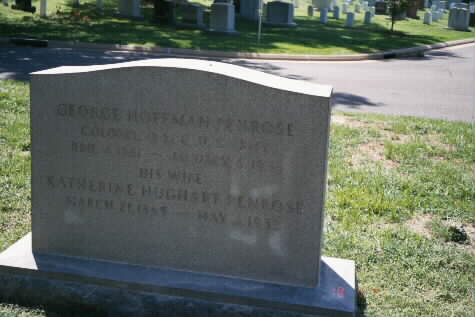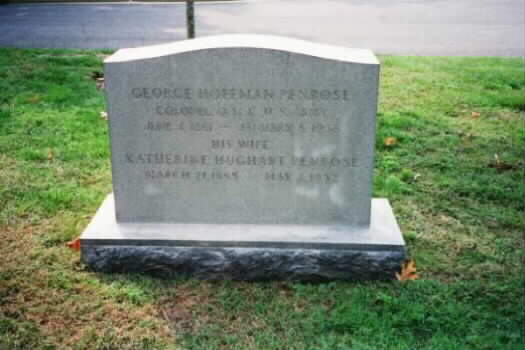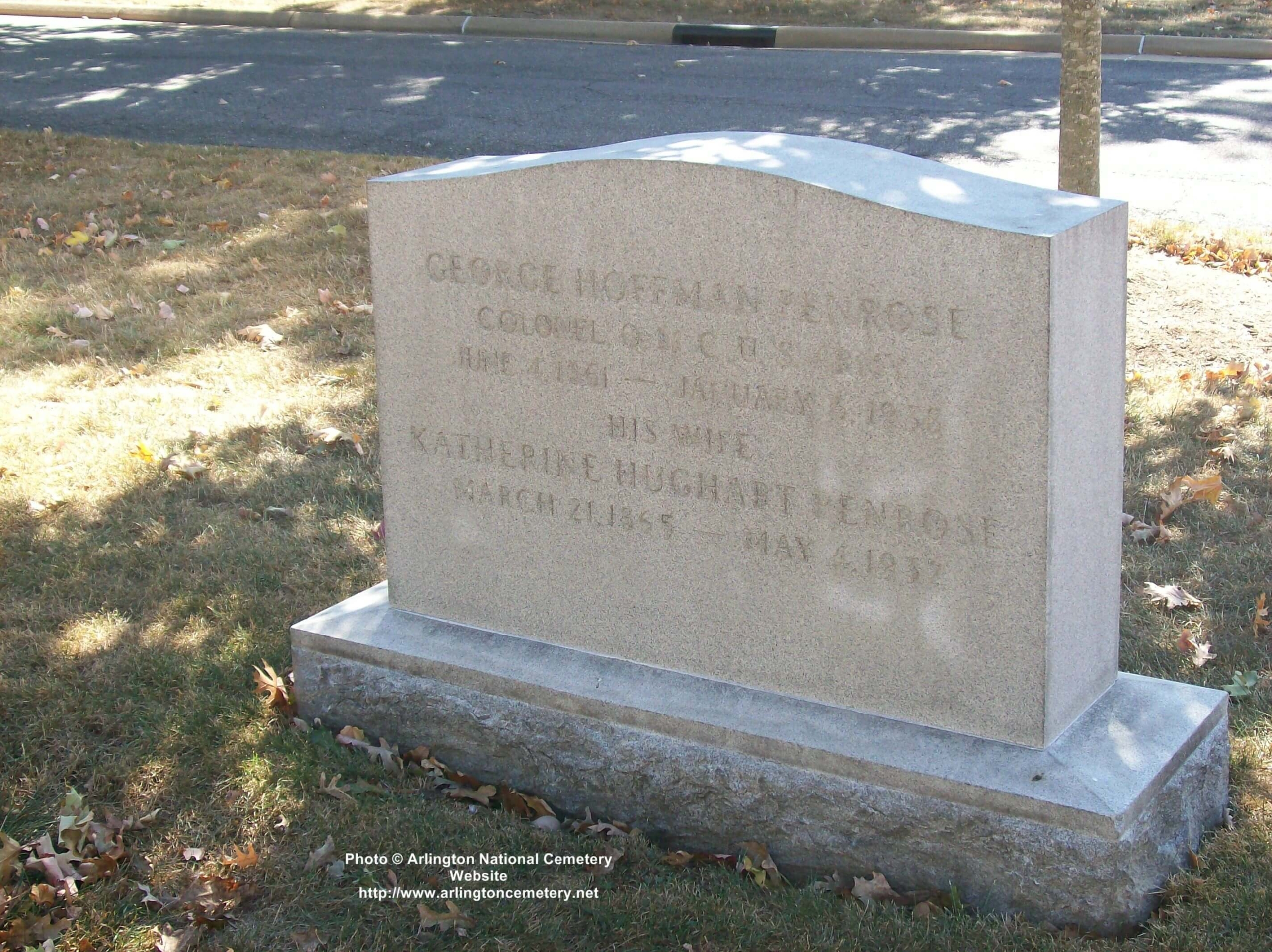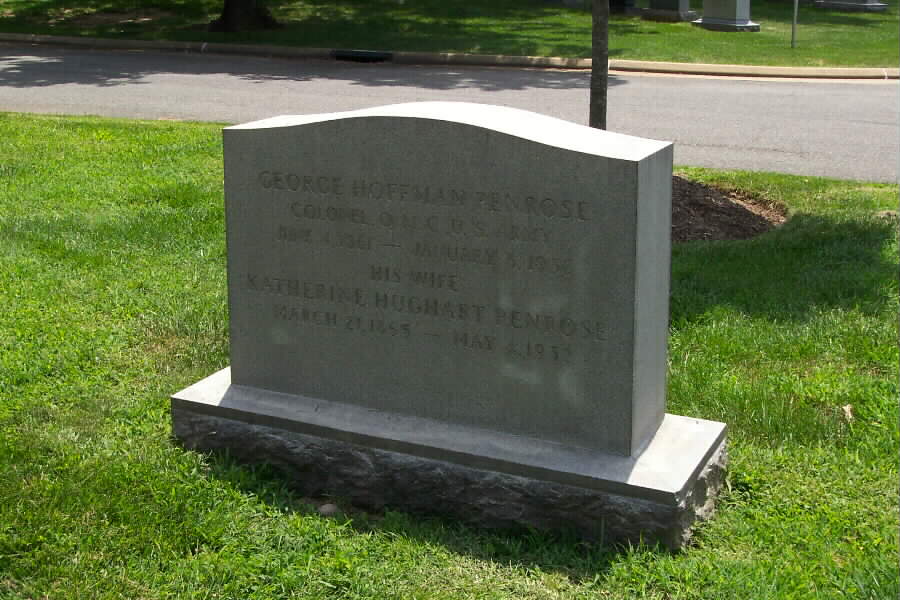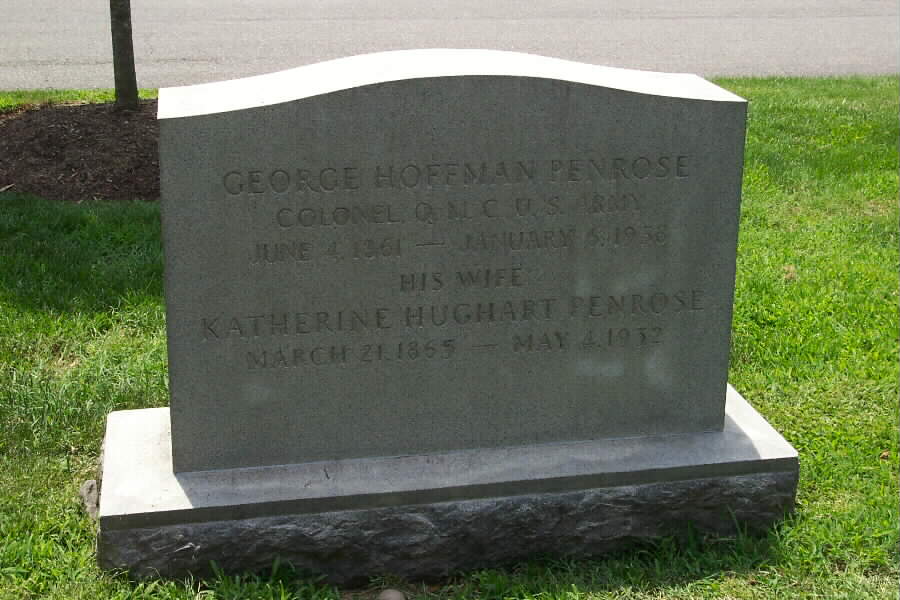George Hoffman Penrose, Colonel, United States Army
June 4, 1861-January 6, 1930
George Hoffman Penrose of New York
Appointed from Utah, Major (Surgeon) of United States Volunteers, 16 June 1898 Major, Surgical Volunteers, 11 March 1901. Honorably discharged from the volunteer service, 19 April 1901. Appointed Captain, Quartermaster Corps, United States Army, on 2 February 1901.
Buried in the same area as William Henry Penrose, Brigadier General, United States Army. It is believed that the General was his father.
Katherine Hughart Penrose, the wife of George Hoffman Penrose,
(March 21, 1869-May 4, 1932), is also buried in this site.
Puerto Rico Expedition During the Spanish-American War:
Shortly after the establishment of the first brigade hospital, Major George H. Penrose, a Brigade Surgeon of the U.S. Volunteers, set up the second. Some of the total of a hundred hospital tents on hand for the use of these two facilities were never needed. The men had been living under arduous conditions, “alternately roasted and basted by the sun and the rain,” and, out of desperation in the last stages of the campaign, forced to drink whatever water they could find, but the sick rate was only 4 percent. Of the 124 still hospitalized on 13 August, more than half were wounded.
On 13 August, the final day of Spanish resistance, between 40 and 47 men were wounded. Majors Penrose and Cardwell were at the front all day, supervising care and evacuation. The rocks and holes characteristic of the roads in the area made it likely that litter-bearers would fall, tossing the wounded onto the ground, and thus only a few of the most seriously injured were moved in this way. Since the construction of travois for their patients would have been too time-consuming, surgeons resorted to “native carromatas, two-wheeled carts drawn by diminutive ponies . . . most abominable vehicles,” to move the casualties three to five miles to Camp Dewey over “execrable roads” so rough that the jostling tore dressings loose. The natives who drove the “abominable vehicles” worked under guard to prevent desertion. Ambulance stations were set up along the road so that the damage to patients and their dressings could be repaired. Despite the difficulties, by 1900 hours of the day the guns fell silent, all wounded had received medical care and been placed in their beds in one of the hospitals.
PENROSE, GEORGE H
COL USA
- VETERAN SERVICE DATES: Unknown
- DATE OF DEATH: 01/06/1938
- DATE OF INTERMENT: 01/10/1938
- BURIED AT: SECTION SOUTH SITE 1431
ARLINGTON NATIONAL CEMETERY
PENROSE, KATHERINE H W/O GEORGE H
- DATE OF DEATH: 05/04/1932
- DATE OF INTERMENT: 05/07/1932
- BURIED AT: SECTION SOUTH SITE 1431
ARLINGTON NATIONAL CEMETERY - WIFE OF GH PENROSE, COL USA
Michael Robert Patterson was born in Arlington and is the son of a former officer of the US Army. So it was no wonder that sooner or later his interests drew him to American history and especially to American military history. Many of his articles can be found on renowned portals like the New York Times, Washingtonpost or Wikipedia.
Reviewed by: Michael Howard

